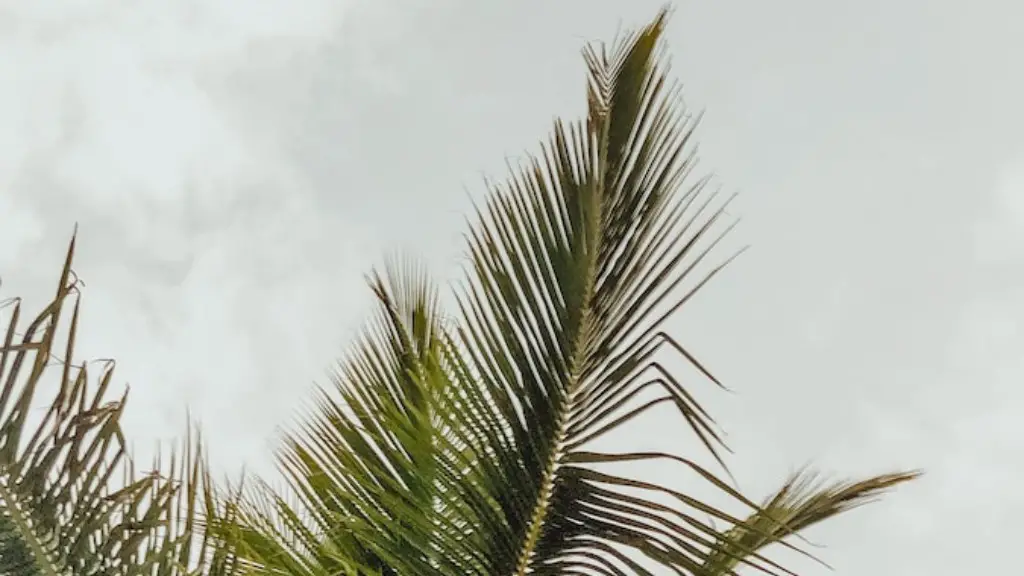Common Causes of Yellowing Palm Leaves
Palm trees hold a special place in many people’s hearts, which means it can be alarming when their leaves suddenly start to yellow and turn brown. Sometimes, yellowing leaves can simply be the result of age and leaf shedding during the regular growth cycle, but if discoloration is persistent, it can be a sign of a larger problem.
The most common causes of yellowing Palm leaves includes nutrient deficiency such as iron, magnesium, and manganese; overwatering; underwatering; contact with cold temperatures; disease; and pest infestation. Each of these issues can be easily identified with a little bit of observation.
Nutrient Deficiency
A common cause of yellowing Palm leaves is a nutrient deficiency, usually iron, magnesium, or manganese. The plants need these minerals in order to produce healthy chlorophyll, which helps them survive and thrive. Without the proper amount of these essential minerals, the plants’ leaves will start to yellow.
The fix for a nutrient deficiency is relatively simple. If the deficiency is iron, then it can simply be treated with a liquid iron supplement. It’s important to make sure to follow package instructions and only give your Palm the dose that is recommended. If the deficiency is in magnesium or manganese, then a soil amendment can help. By adding a fertilizer specifically formulated for these minerals, the deficiency can be corrected.
Overwatering or Underwatering
Another common cause of yellowing leaves on an otherwise healthy Palm tree is incorrect watering. Too much or too little water can both lead to discoloration. A Palm needs about 1-2 inches of water per week, depending on the soil type and climate.
The key to finding the right balance of water is to check the soil. The soil should be slightly damp; if it’s wet or constantly soggy, the Palm is being overwatered and should be allowed to dry out. If the soil is dry and cracked, the Palm needs more water. If the leaves start to yellow, the symptoms should clear up with proper watering.
Cold Damage
A sudden change in temperatures can cause Palm leaves to yellow. Palms don’t tolerate cold temperatures, so if they are suddenly exposed to cold weather, they can suffer from cold damage. This is more common in the winter months, when temperatures can go from warm one day to freezing the next. The leaves can start to yellow and brown, and may even curl and die.
The best way to prevent cold damage is to keep your Palm away from cold drafts and out of cold temperatures. If the temperature drops suddenly and you don’t have time to move your Palm, try to cover it with a sheet or tarp to help protect it from the cold.
Disease and Pest Infestation
Another cause of yellowing Palm leaves is disease or pest infestation. Common diseases among Palms include root rot, scale, and leaf spot. Common pests include mealybugs, thrips, and caterpillars.
It can be hard to tell the difference between disease and pests at first glance, but there are some tell-tale signs. If the leaves are yellowing as well as patchy or spotted, it’s likely to be a disease. If there are also clusters of pests or trails of pests (such as mealybugs), it’s likely to be a pest infestation.
The fix for diseases and pests depends on the severity. If the infestation is light or the disease is minor, then the Palm can likely be saved with a few simple treatments, such as fungicides or insecticides. If the disease or infestation is more serious, then it’s best to consult a professional.
Soil Quality
The quality of the soil can have an impact on the health of your Palm. It’s important to make sure the soil is well-draining and aerated, and that it contains adequate organic matter. Clay or compacted soil can prevent proper water and nutrient absorption and lead to yellowing or browning of the leaves.
If the soil quality is an issue, it can be improved with a few simple treatments. Soil amendments such as compost and mulch can help aerate and fertilize the soil. If the soil has a high clay content, the addition of sand can help break it up and make it more porous. And if there’s standing water that won’t drain away, the addition of drainage holes can help.
Sunburn and Heat Stress
Palms can also be affected by too much sun and heat. If a Palm gets too much direct sunlight, it can suffer from sunburn and heat stress. This can cause the leaves to yellow and eventually brown and die. Heat stress can also affect the root system, which can lead to serious damage.
The best way to protect your Palm from sunburn and heat stress is to make sure it’s not in direct sunlight during the hottest part of the day. If that’s not possible, then you can use a sunscreen specifically designed for Palms, or move the Palm to a more shaded area.
Air Quality
The quality of the air can also affect Palm trees. If the air is too dry or polluted, it can cause the foliage to yellow and eventually die. Pollution from car exhaust and nearby factories can increase the amount of carbon dioxide in the atmosphere, causing leaves to yellow.
The best way to improve air quality around your Palm tree is to keep your Palm away from sources of pollution, such as streets and factories. You can also help improve air quality by planting more trees, which will help filter out pollutants in the air.
Cultural Practices
Finally, improper cultural practices can also lead to yellowing leaves on your Palm tree. If the tree is pruned too aggressively, this can lead to lack of foliage and yellowing leaves. Removing too much of the foliage will also cause the tree to suffer from nutrient imbalance, which can also result in yellowing leaves.
The best thing to do is to try to follow good cultural practices when caring for your Palm tree. Be sure not to over prune, and always provide adequate water, feeding, and light. And if you’re unsure how to properly care for your Palm, be sure to consult a professional.



